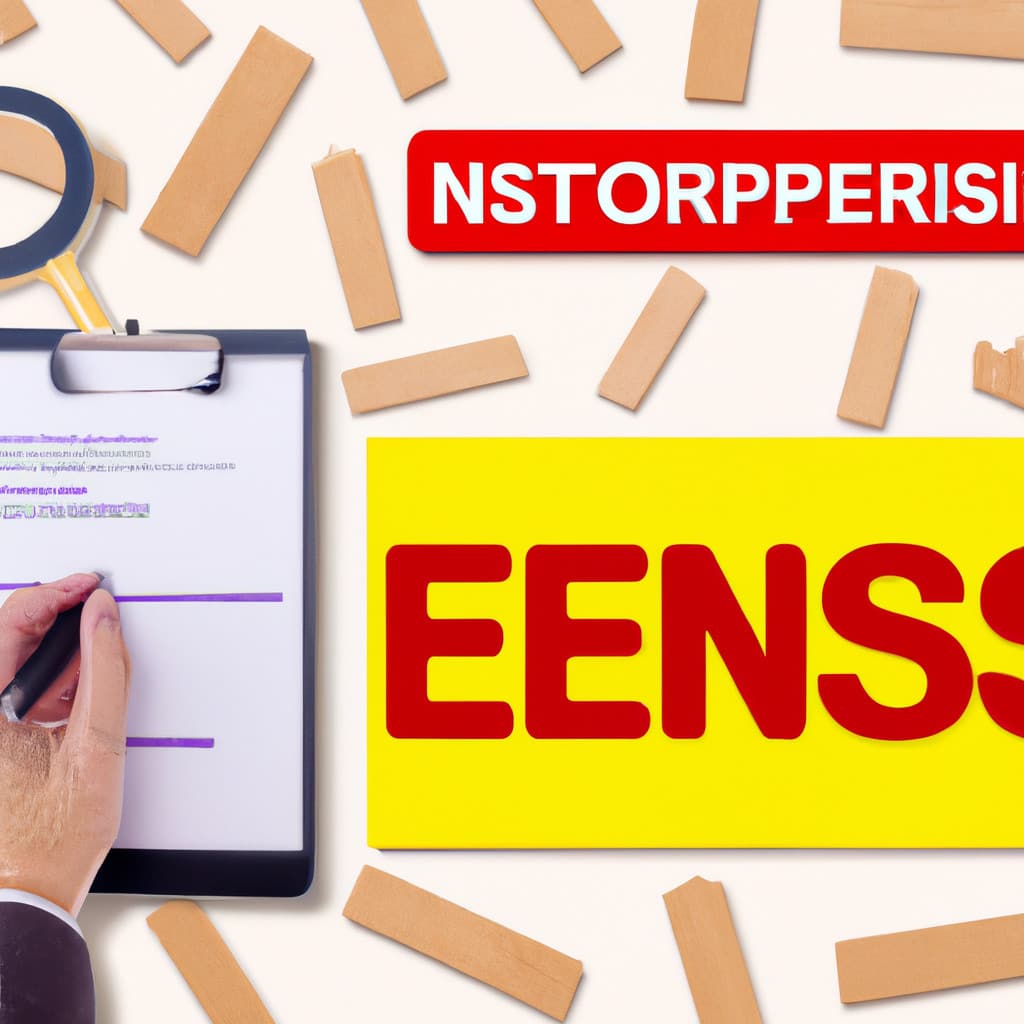5 Practical Examples for Automation with PowerShell: Streamline Your Workflows Today
In today’s fast-paced world of technology and innovation, the need for automation cannot be overstressed. With unrelenting demands on software engineers to produce high-quality work, finding efficiency in daily tasks is imperative. Automation with PowerShell is an essential skill to master for those who want to optimize their workflows and streamline their processes. In this article, we will delve into five real-world examples which demonstrate how you can leverage the power of PowerShell to automate various aspects of your work.
1. Automating File Management
One of the most significant advantages of using PowerShell is its efficacy in file management automation. The ability to navigate, manipulate, and manage files and directories in a flexible and efficient manner will undoubtedly save time and effort. Consider the following example:
*Task:* Automatically move all “log” files older than 30 days from the “Logs” folder to the “OldLogs” folder.
To achieve this, you can use the following code snippet:
“`powershell
$source = “C:Logs”
$destination = “C:OldLogs”
$thresholdDate = (Get-Date).AddDays(-30)
Get-ChildItem -Path $source -Recurse -File -Filter “*.log” | Where-Object { $_.LastWriteTime -lt $thresholdDate } | Move-Item -Destination $destination
“`
This script identifies and moves the specified files while maintaining their directory structure, streamlining your ongoing file management needs.
2. Simplifying User Management in Active Directory
For IT administrators, user management is critical to maintaining access controls and ensuring optimal system performance. Through automation with PowerShell examples, you can easily manage user accounts in Active Directory with efficiency and precision.
*Task:* Identify all users in the “Sales” organizational unit (OU) that have not logged in for 60 days and disable their accounts.
“`powershell
$ouPath = “OU=Sales,DC=yourdomain,DC=com”
$thresholdDate = (Get-Date).AddDays(-60)
Import-Module ActiveDirectory
Get-ADUser -Filter * -SearchBase $ouPath -Properties LastLogonTimestamp | Where-Object { $_.LastLogonTimestamp -lt $thresholdDate } | Disable-ADAccount
“`
The above script demonstrates how PowerShell can simplify user management tasks, ensuring your organization’s security and productivity.
3. Automating Software Installation
Installing software on multiple machines can be a tedious process. PowerShell enables you to automate this task, significantly reducing the time spent on repetitive installations.
*Task:* Install the Google Chrome browser on a remote computer.
“`powershell
$remoteComputer = “Remote-PC”
$installerUrl = “https://dl.google.com/chrome/install/375.126/chrome_installer.exe”
$localPath = “C:Tempchrome_installer.exe”
Invoke-WebRequest -Uri $installerUrl -OutFile $localPath
Invoke-Command -ComputerName $remoteComputer -ScriptBlock { Start-Process -FilePath “C:Tempchrome_installer.exe” -ArgumentList “/silent /install” -Wait }
“`
This example illustrates the power of automation with PowerShell in streamlining software deployments across an organization.
4. Scheduling Automated Tasks
PowerShell allows you to automate tasks and run them on a specified schedule. Instead of manually executing scripts, you can use the built-in Task Scheduler to streamline your workflow further.
*Task:* Schedule a PowerShell script to run daily at 2:00 PM.
“`powershell
$scriptPath = “C:ScriptsYourScript.ps1”
$action = New-ScheduledTaskAction -Execute ‘powershell.exe’ -Argument “-NoProfile -ExecutionPolicy Bypass -File $scriptPath”
$trigger = New-ScheduledTaskTrigger -Daily -At 2pm
Register-ScheduledTask -Action $action -Trigger $trigger -TaskName “DailyScript” -Description “Run PowerShell script daily at 2 PM”
“`
In this example, the script creates a scheduled task to automate the execution of your desired script, allowing you to focus on other critical tasks.
5. Automating System Maintenance
Regularly monitoring and maintaining your system is crucial for optimal performance. With PowerShell, you can easily automate essential maintenance tasks to ensure that your system runs smoothly.
*Task:* Clear Windows event logs older than seven days.
“`powershell
$thresholdDate = (Get-Date).AddDays(-7)
Get-WinEvent -ListLog * | Where-Object { $_.RecordCount -gt 0 } | ForEach-Object {
$logName = $_.LogName
$query = “*[System[(EventRecordID >= 0) and TimeCreated[timediff(@SystemTime) >= $($thresholdDate.Ticks)]]”
Get-WinEvent -FilterXml $query | Remove-EventLog -LogName $logName
}
“`
This script iterates through each event log, deletes records older than the specified threshold, and effectively keeps your system clean and up to date.
In conclusion, the power of automation with PowerShell examples can vastly improve the productivity and efficiency of software engineers and IT administrators alike. By mastering these techniques, you will be well-equipped to optimize your workflows, save valuable time, and focus on more critical tasks. Begin your journey towards automation today and experience the benefits that PowerShell has to offer.
How can you create an automated script to manage Active Directory users and groups using PowerShell command-line?
To create an automated script to manage Active Directory (AD) users and groups using PowerShell command-line, you can follow these steps:
1. Install the Active Directory module: First, ensure that the necessary Active Directory module for PowerShell is installed on your system. You can install it via the following command:
“`
Install-WindowsFeature -Name RSAT-AD-PowerShell
“`
2. Import the AD module: Start by importing the Active Directory module in your PowerShell session:
“`
Import-Module ActiveDirectory
“`
3. Create a script: Now, create a new .ps1 file that will contain your PowerShell script. For this example, let’s call it “Manage_AD_Users_and_Groups.ps1”.
4. Organize your script: Divide your script into sections for managing users and groups, such as creating users, updating users, deleting users, creating groups, adding users to groups, etc.
5. Create users: Use the `New-ADUser` cmdlet to create new users in the script:
“`
$FirstName = Read-Host “Enter the first name”
$LastName = Read-Host “Enter the last name”
$UserName = Read-Host “Enter the username”
$Password = Read-Host “Enter the password” -AsSecureString
$OUPath = Read-Host “Enter the OU path”
New-ADUser -Name “$FirstName $LastName” -GivenName $FirstName -Surname $LastName -SamAccountName $UserName -UserPrincipalName “[email protected]” -AccountPassword $Password -Enabled $true -Path $OUPath -ChangePasswordAtLogon $false
“`
6. Update users: Use the `Set-ADUser` cmdlet to update user information:
“`
$UserName = Read-Host “Enter the username to update”
$NewFirstName = Read-Host “Enter the new first name”
$NewLastName = Read-Host “Enter the new last name”
Set-ADUser -Identity $UserName -GivenName $NewFirstName -Surname $NewLastName
“`
7. Delete users: Use the `Remove-ADUser` cmdlet to delete users:
“`
$UserName = Read-Host “Enter the username to delete”
Remove-ADUser -Identity $UserName -Confirm:$true
“`
8. Create groups: Use the `New-ADGroup` cmdlet to create new groups:
“`
$GroupName = Read-Host “Enter the new group name”
$GroupScope = Read-Host “Enter the group scope (DomainLocal, Global, Universal)”
$OUPath = Read-Host “Enter the OU path”
New-ADGroup -Name $GroupName -GroupScope $GroupScope -Path $OUPath
“`
9. Add users to groups: Use the `Add-ADGroupMember` cmdlet to add users to groups:
“`
$GroupName = Read-Host “Enter the group name”
$UserName = Read-Host “Enter the username to add”
Add-ADGroupMember -Identity $GroupName -Members $UserName
“`
10. Save and run your script in PowerShell command-line as needed.
Remember to customize the script according to your organization’s requirements and use appropriate cmdlets for managing various aspects of AD users and groups.
What are some effective examples of utilizing PowerShell command-line for automating server maintenance tasks in a Windows environment?
PowerShell is a powerful scripting language and command-line shell that’s designed for automation and administration tasks on Windows-based systems. Here are some effective examples of utilizing PowerShell command-line for automating server maintenance tasks in a Windows environment:
1. Automating Windows updates: You can use PowerShell to install and manage Windows updates across your servers. The following command searches for and installs available updates:
“`powershell
Install-Module PSWindowsUpdate
Get-WindowsUpdate -Install
“`
2. Managing services: PowerShell can automate tasks like starting, stopping, or restarting services. For example, you can restart the IIS service on a remote computer:
“`powershell
Invoke-Command -ComputerName Server1 -ScriptBlock { Restart-Service -Name W3SVC }
“`
3. Creating scheduled tasks: PowerShell makes it easy to create and update scheduled tasks. The following script creates a scheduled task that runs a specific script every day at 7:00 AM:
“`powershell
$Action = New-ScheduledTaskAction -Execute “powershell.exe” -Argument “-File C:ScriptsDailyTask.ps1”
$Trigger = New-ScheduledTaskTrigger -Daily -At 7am
Register-ScheduledTask -Action $Action -Trigger $Trigger -TaskName “DailyMaintenance” -Description “Runs daily maintenance script.”
“`
4. Checking disk space: Monitoring and managing disk space is crucial for maintaining a healthy server environment. Use the following command to check the free disk space on multiple computers:
“`powershell
$computers = ‘Server1’, ‘Server2’, ‘Server3′
Invoke-Command -ComputerName $computers -ScriptBlock { Get-PSDrive -PSProvider FileSystem } | Select-Object -Property PSComputerName, Name, @{Name=’FreeSpaceGB’;Expression={“{0:N2}” -f ($_.Free / 1GB)}}
“`
5. Cleaning up temporary files: Remove old and unneeded files in the Temp folder with this command:
“`powershell
$TempPath = ‘C:WindowsTemp*’
Remove-Item $TempPath -Recurse -Force -ErrorAction SilentlyContinue
“`
6. Consolidating event logs: You can automate exporting and consolidating event logs from multiple Windows servers using PowerShell:
“`powershell
$computers = ‘Server1’, ‘Server2’, ‘Server3’
$OutputPath = ‘C:EventLogs’
ForEach ($computer in $computers) {
Get-WinEvent -ComputerName $computer -FilterHashtable @{ LogName=’System’; StartTime=(Get-Date).AddDays(-7)} | Export-Csv -Path “$OutputPath$computer-EventLogs.csv” -NoTypeInformation
}
“`
These are just a few examples of how you can leverage PowerShell command-line for automating server maintenance tasks in a Windows environment. The possibilities are nearly endless, making PowerShell an indispensable tool for IT professionals.
Can you provide real-world examples of automating file manipulation and data processing using PowerShell command-line?
Sure! Below are three real-world examples illustrating how to automate file manipulation and data processing tasks using the PowerShell command-line.
Example 1: Renaming multiple files
Suppose you want to rename all the text files in a directory from “.txt” to “.log”. You can accomplish this using the following PowerShell script:
“`powershell
Get-ChildItem -Path “C:ExampleDirectory*.txt” | ForEach-Object { Rename-Item $_.FullName -NewName ($_.Name -replace “.txt”,”.log”) }
“`
In this script, `Get-ChildItem` retrieves all the “.txt” files in the specified directory, while `ForEach-Object` iterates through the files and renames them using the `Rename-Item` command.
Example 2: Merging CSV files
If you have multiple CSV files containing data that you want to combine into a single CSV file, you can use this script:
“`powershell
$SourceFolder = “C:ExampleDirectoryCSVFiles”
$DestinationFile = “C:ExampleDirectoryMergedData.csv”
Get-ChildItem -Path $SourceFolder -Filter *.csv | ForEach-Object {
$CurrentFile = Import-Csv -Path $_.FullName
$CurrentFile | Export-Csv -Path $DestinationFile -Append -NoTypeInformation
}
“`
Here, `Get-ChildItem` locates all CSV files in the source folder, and `ForEach-Object` processes each file by importing its contents with `Import-Csv` and appending it to the destination file using `Export-Csv`.
Example 3: Processing log file data
Imagine you have a log file named “server.log” that contains various elements, including lines starting with the word “ERROR”. You could extract these error lines and save them in a separate file using the following script:
“`powershell
$LogFile = “C:ExampleDirectoryserver.log”
$ErrorFile = “C:ExampleDirectoryerror_lines.log”
Get-Content -Path $LogFile | Where-Object { $_ -match “^ERROR” } | Set-Content -Path $ErrorFile
“`
This script reads the log file’s content through `Get-Content`, filters the error lines with `Where-Object`, and saves them in a new error file using `Set-Content`.

